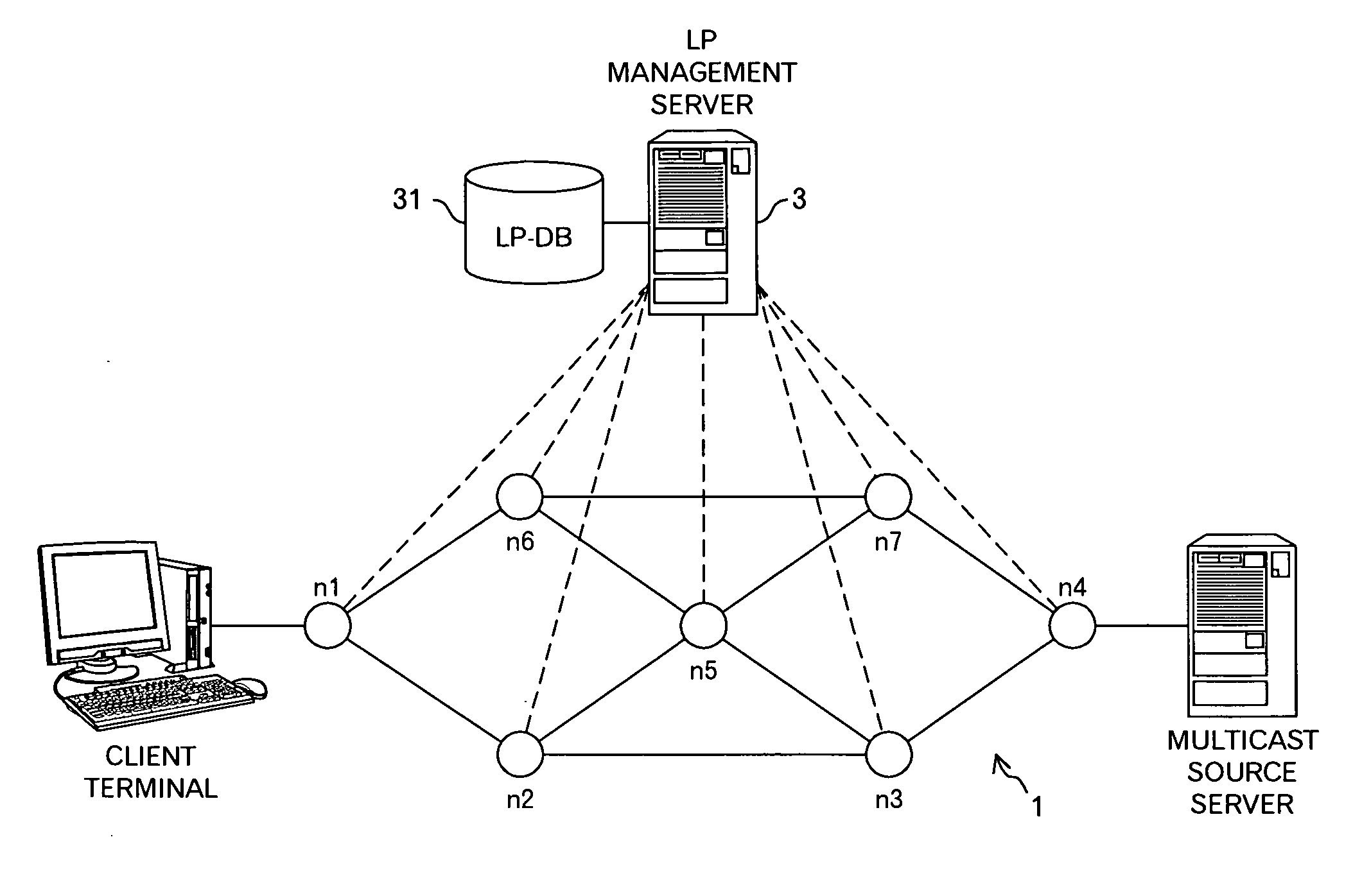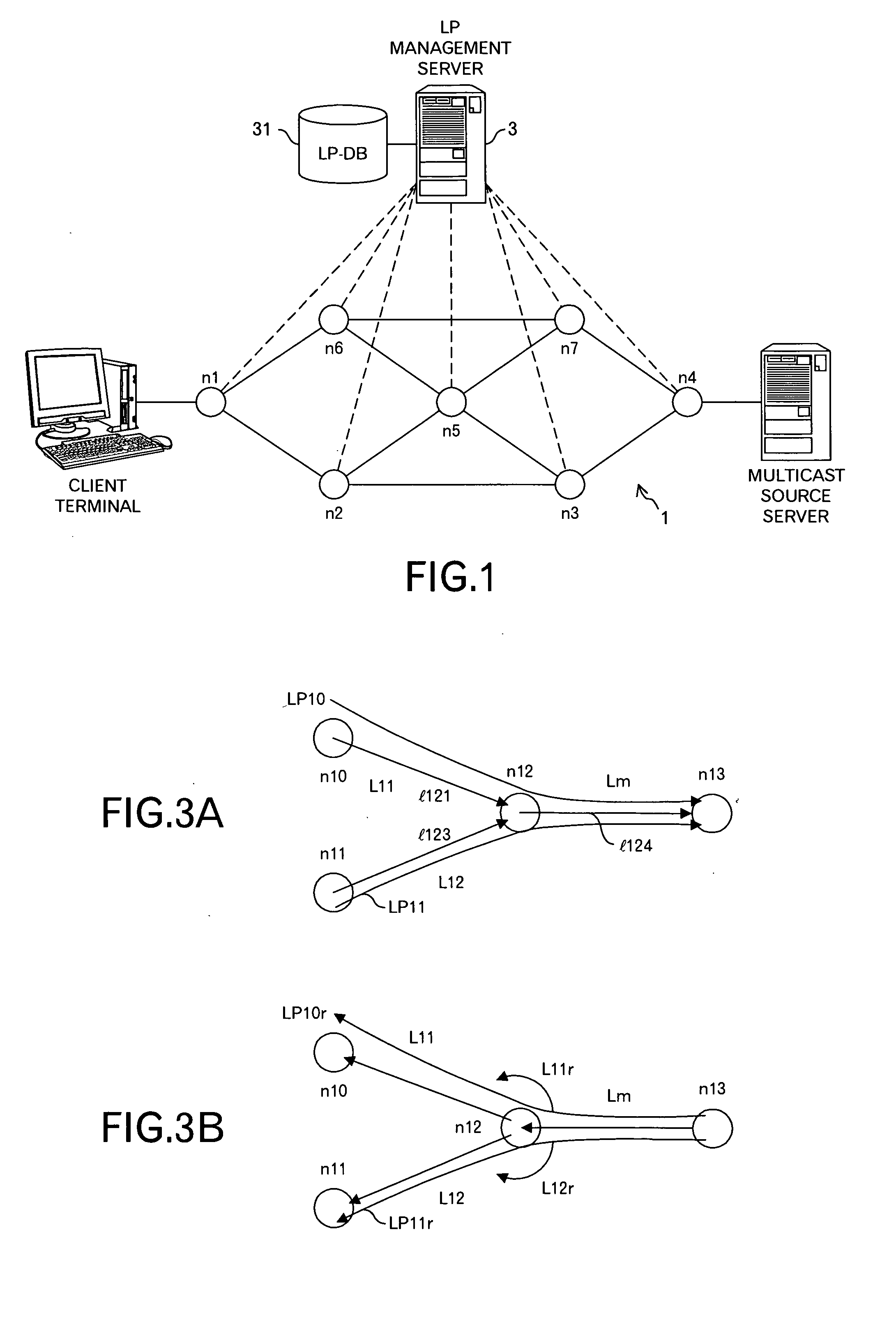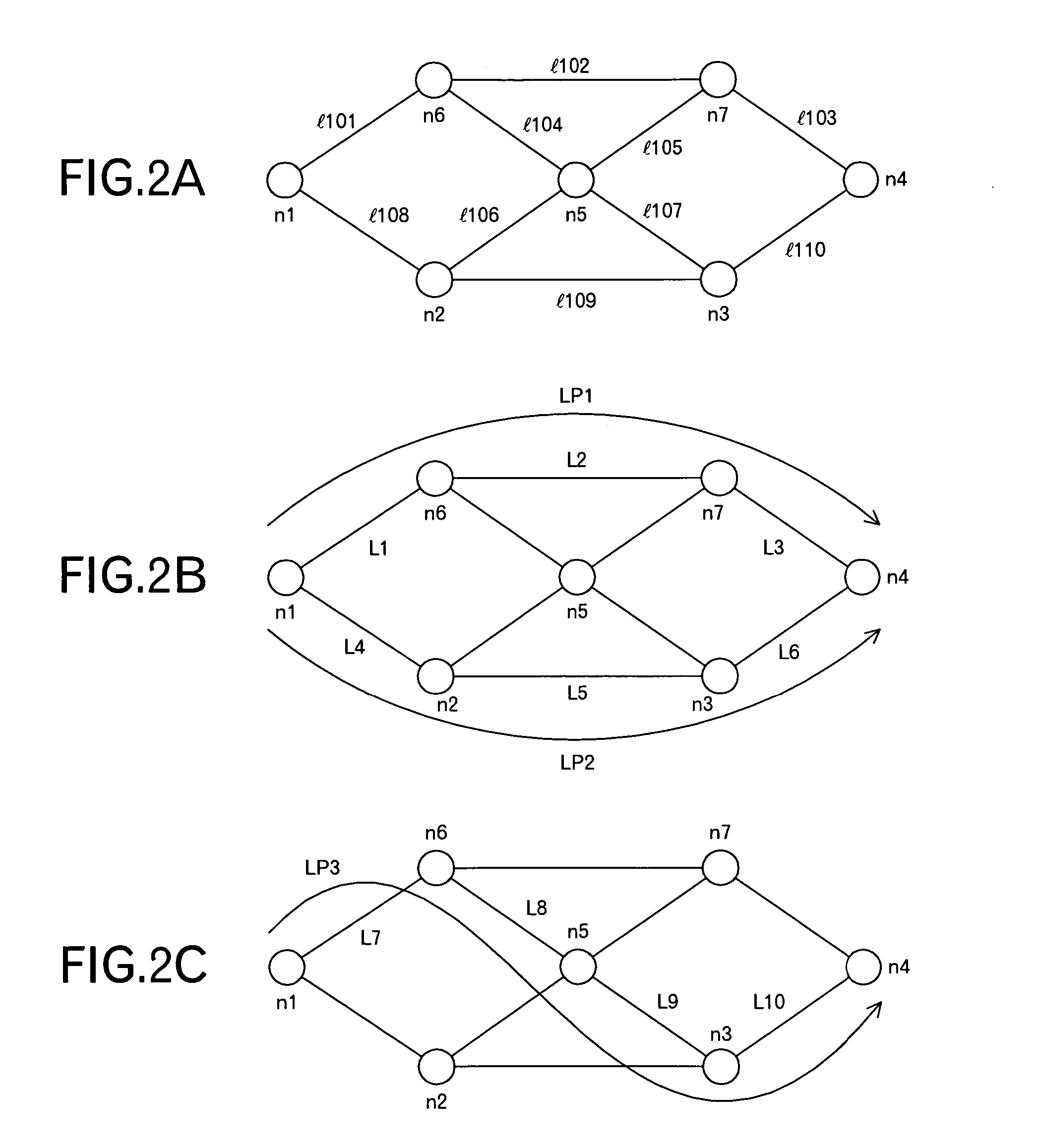Multicast control technique using MPLS
a multi-cast transmission and control technique technology, applied in the direction of digital transmission, data switching network, electrical apparatus, etc., can solve the problems of low operation efficiency, difficult to generate a distribution tree, difficult to carry out distribution for each source type, etc., to improve the management efficiency of multi-cast transmission
- Summary
- Abstract
- Description
- Claims
- Application Information
AI Technical Summary
Benefits of technology
Problems solved by technology
Method used
Image
Examples
Embodiment Construction
[0049]FIG. 1 is a conceptual diagram of a network according to an embodiment of the invention. In this embodiment, an LP management server 3 is connected to a network 1 including routers, such as nodes n1 to n7. The characters ‘LP’ represent an abbreviated word of a Label switched Path in MPLS (Multi Protocol Label Switching), and the LP managing sever 3 functions to determine the optimum path (LP) between arbitrary nodes in the network 1. That is, routing in the network 1 is intensively controlled by the LP management server 3, and the nodes are directly and indirectly controlled by the LP management server 3, as represented by dotted lines in FIG. 1. For such a processing, the LP management server 3 manages an LP-DB 31 storing data relating to LPs. The data stored in the LP-DB 31 will be described later in detail.
[0050] Further, for example, the node n4 is a server-side edge router connected to a multicast source server, and the node n1 is a client-terminal-side edge router conne...
PUM
 Login to View More
Login to View More Abstract
Description
Claims
Application Information
 Login to View More
Login to View More - R&D
- Intellectual Property
- Life Sciences
- Materials
- Tech Scout
- Unparalleled Data Quality
- Higher Quality Content
- 60% Fewer Hallucinations
Browse by: Latest US Patents, China's latest patents, Technical Efficacy Thesaurus, Application Domain, Technology Topic, Popular Technical Reports.
© 2025 PatSnap. All rights reserved.Legal|Privacy policy|Modern Slavery Act Transparency Statement|Sitemap|About US| Contact US: help@patsnap.com



